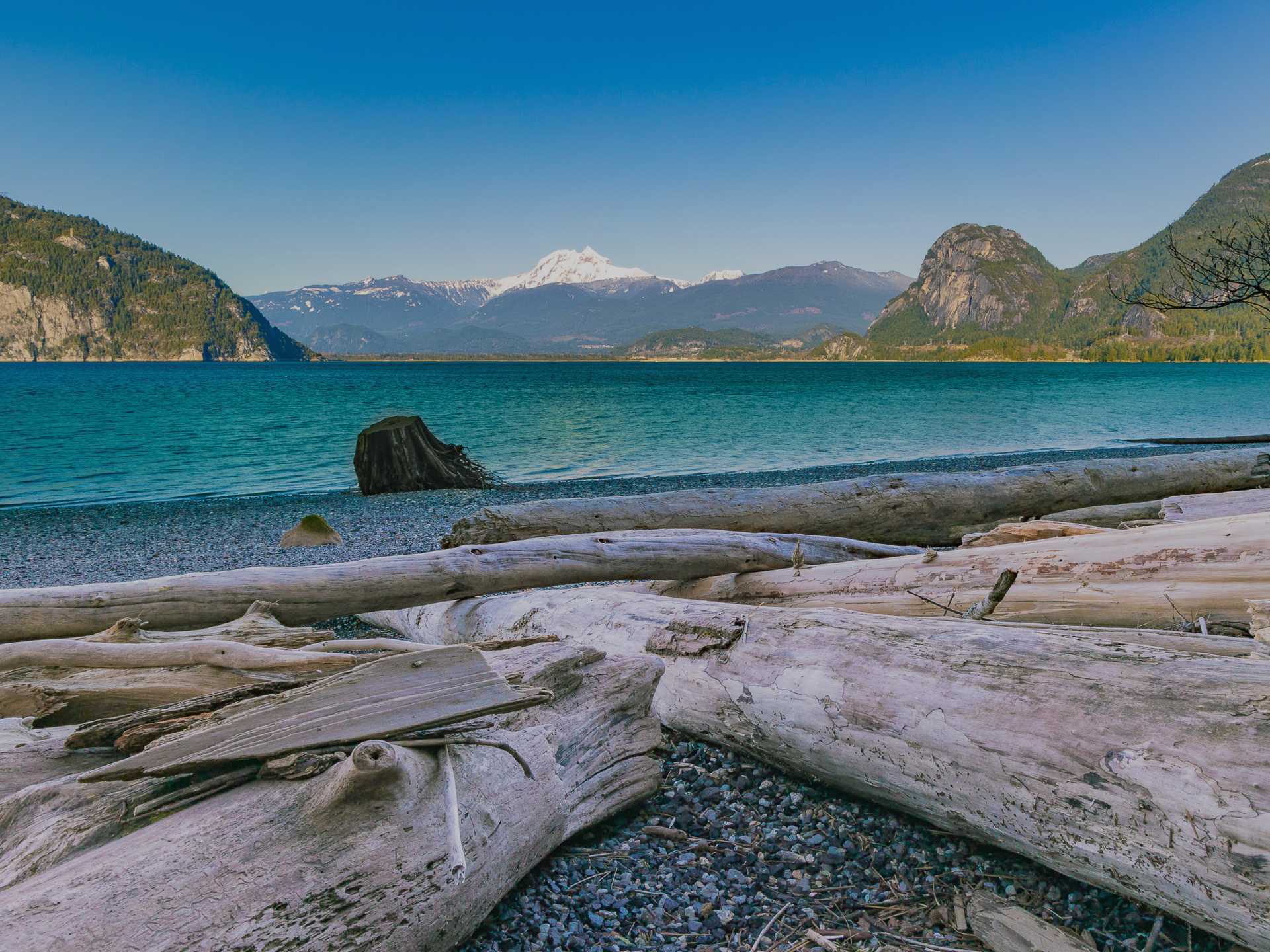The story began in the ice ages and the shaping of the beautiful mountain landscapes, the formation of the valleys and rivers, and the arrival of the Skohomish people in the long ago. Then came the creation of British Columbia, the European settlers, the age of steam, the glory days of the post-war decades, and the drama of modern decades...
Átl’ka7tsem Howe Sound is a mountainous coastal paradise for those seeking an escape from the noise and distractions of an overly digitized society. It is located on the southern coast of British Columbia, on the boundary of civilization, stretching 40km from the shores of Vancouver and narrowing into North America's southernmost fjord, which penetrates the Coastal Mountain Range and leads to its head at the mountain town of Squamish.
It is a magical place where you can be emersed in stunning scenery, rich history and biological diversity. Condé Nast Travel has compared the drive from Vancouver to Squamish to the most scenic drives of Italy, California, and Norway and have rated it as one of the best coastal drives from around the globe.
Our journey through the Sound, however, spans millions of years, so to find our way, let's start at the beginning.
How Was Howe Sound Created?
The land mass framing the Sound has been formed over millions of years, with much of its coastline defined from the migration of a giant granite terrane from what is now Baja, Mexico northward to form much of the coastline of the Pacific Northwest we see today.
Once the terrane settled, ocean plates off the western coast of Vancouver Island began to subduct the landmass and created a dramatic volcanic belt at the northern head of the Sound with the scenic peaks of Nch'kaý, otherwise known as the 8800' dormant volcano Mount Garibaldi, towering over the local Coastal Mountain Range. Over the past million years, Garibaldi's eruptions, flows and landslides in conjunction with the scouring of ice age glaciers thousands of meters deep have formed and sculpted the valleys and fjords that we now recognize as the rugged landscape around and within Howe Sound.
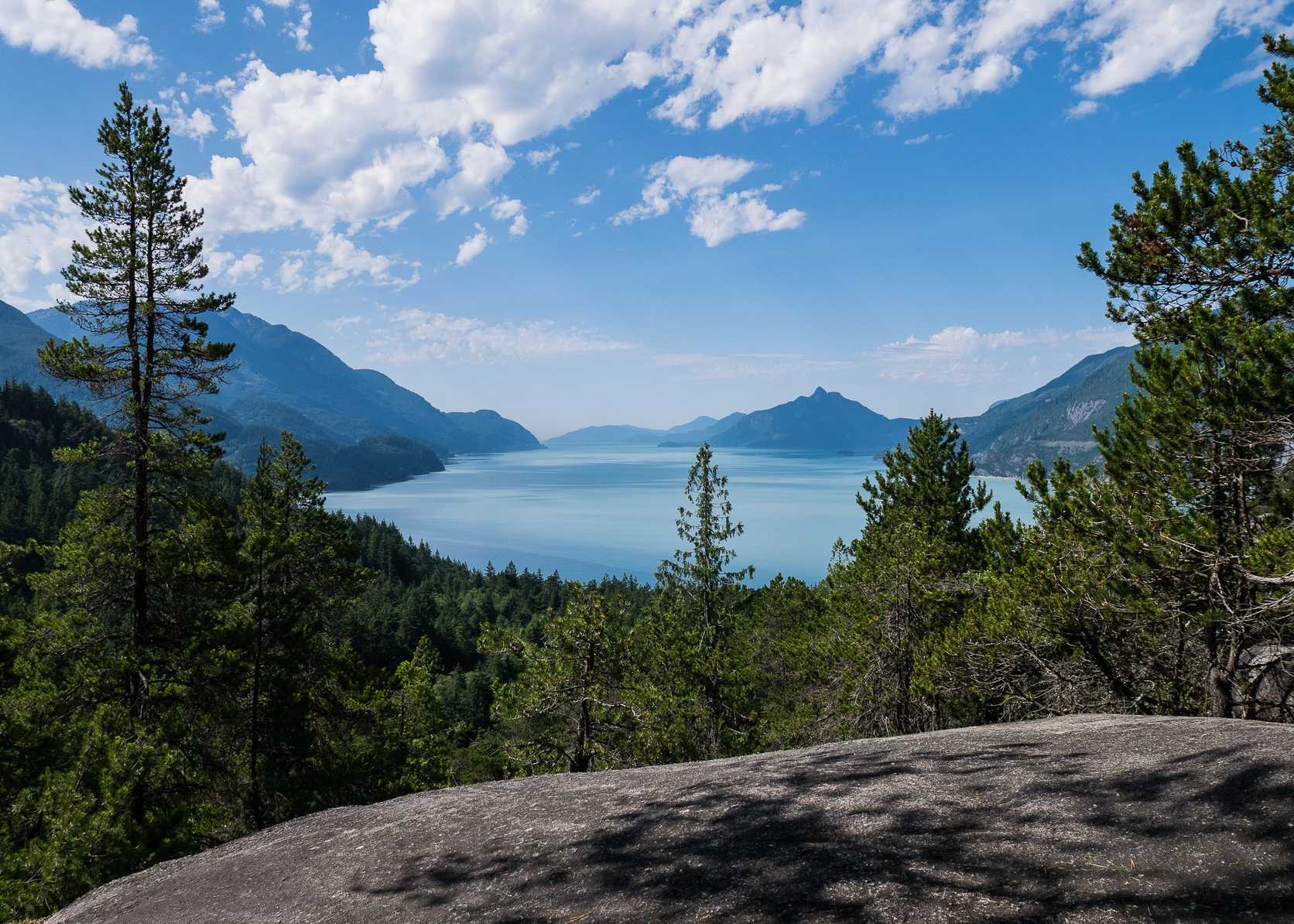
Present day Howe Sound is surrounded by a temperate rainforest, vibrant coastal communities and a diversity of terrestrial, intertidal and marine life. The glacial rivers of several interconnected valleys flow into the northern head of the Sound, forming an estuary rich in regional and migrating wildlife, and giving the waters around Squamish their signature emerald colour.
Towering snow capped mountains, cascading waterfalls and unique geographic features combine to make Howe Sound, and most notably the fjord that forms its northern panhandle, one of the most picturesque locations in Canada.
These geographic features combine in the northern section of the Sound to create near-perfect wind conditions in Squamish, which have been recognized by sailors, kiteboarders, windsurfers and other windsport enthusiasts as amongst the best conditions in the world.
When Did People Arrive in Howe Sound?
Although there are disputes over the details, there is a general scientific agreement that the settlement of North America began over 10,000 years ago as people crossed a land bridge from Siberia to Alaska and migrated down the Pacific Coast.
Some of the ancient settlements in Átl’ka7tsem Howe Sound are amongst the oldest in North America. The ancestors of the Squamish Nation, traditionally known as the Sḵwx̱wú7mesh, have lived in the region for thousands of years and are the Indigenous people of the area.
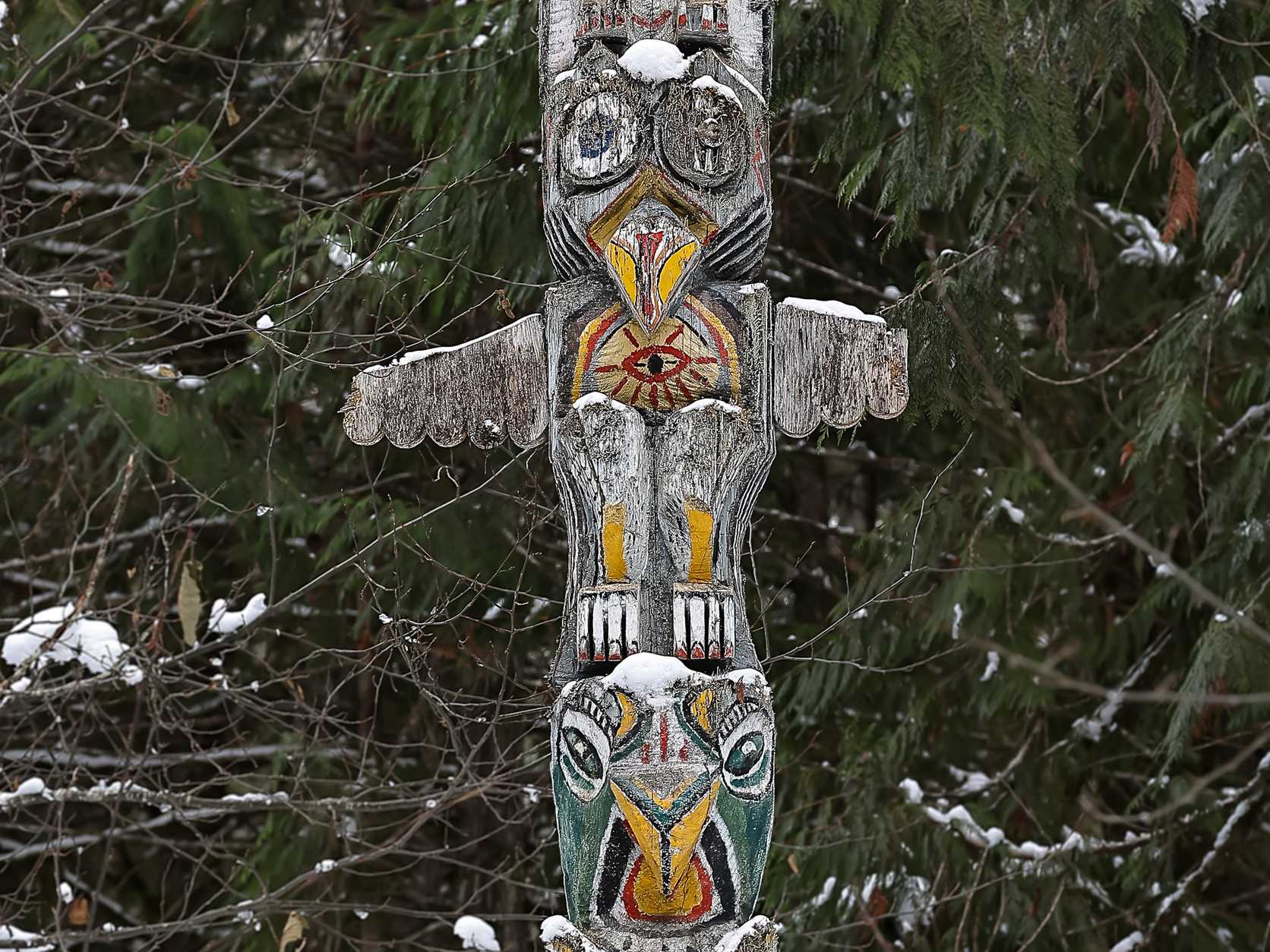
Their traditional way of life was based on fishing, hunting, and gathering. The people relied upon many of the natural resources of Átl’ka7tsem Howe Sound, including salmon, herring, and shellfish, as well as plants and berries, to sustain their communities, with many deep traditions, and spiritual and cultural connections with the land, waters, and resources of the Sound remaining today.
The Sound was also a transportation link across the traditional territories, and the canoe was integral to navigating the coastal waterways. Unlike the contemprary place name of Howe Sound, the Indigenous people named the Sound based upon their context within it: Átl’ka7tsem is the traditional name when paddling north into the Sound, and Txwnéwu7ts is the name when leaving.
European Arrival
Although the Spanish had explored coastal areas to the west, it is believed that the first European to explore Howe Sound was the British Royal Navy officer Captain George Vancouver in 1792 as part of his exploration of the Pacific Northwest of North America and attempt to discover a northerly navigable route between the Pacific and Atlantic oceans, known as a Northwest Passage. Upon Vancouver's arrival aboard his ship, the Discovery, he named the Sound after Admiral Earl Howe, a prominent naval figure of the time.
Despite being unable to discover a northerly passage to the Atlantic, Vancouver's expedition made important contributions to the mapping and understanding of Howe Sound and the Pacific Northwest. Journals and charts from his voyage were the catalyst for further exploration by Europeans and widely used by generations of explorers, traders, and settlers.
What Types of Industries Operated in Howe Sound?
During the late 19th century and 20th century, the Sound became a hub of industrial activity, with farming, logging, mining, pulp, and fishing operations established throughout the area. During this time, towns such as Squamish, Woodfibre, and Britannia Beach emerged, and the exploitation of extractable resources and rapid industrial development had a significant impact on the landscape and ecology of the Sound, causing the depletion of many natural resources and the destruction of natural environments.
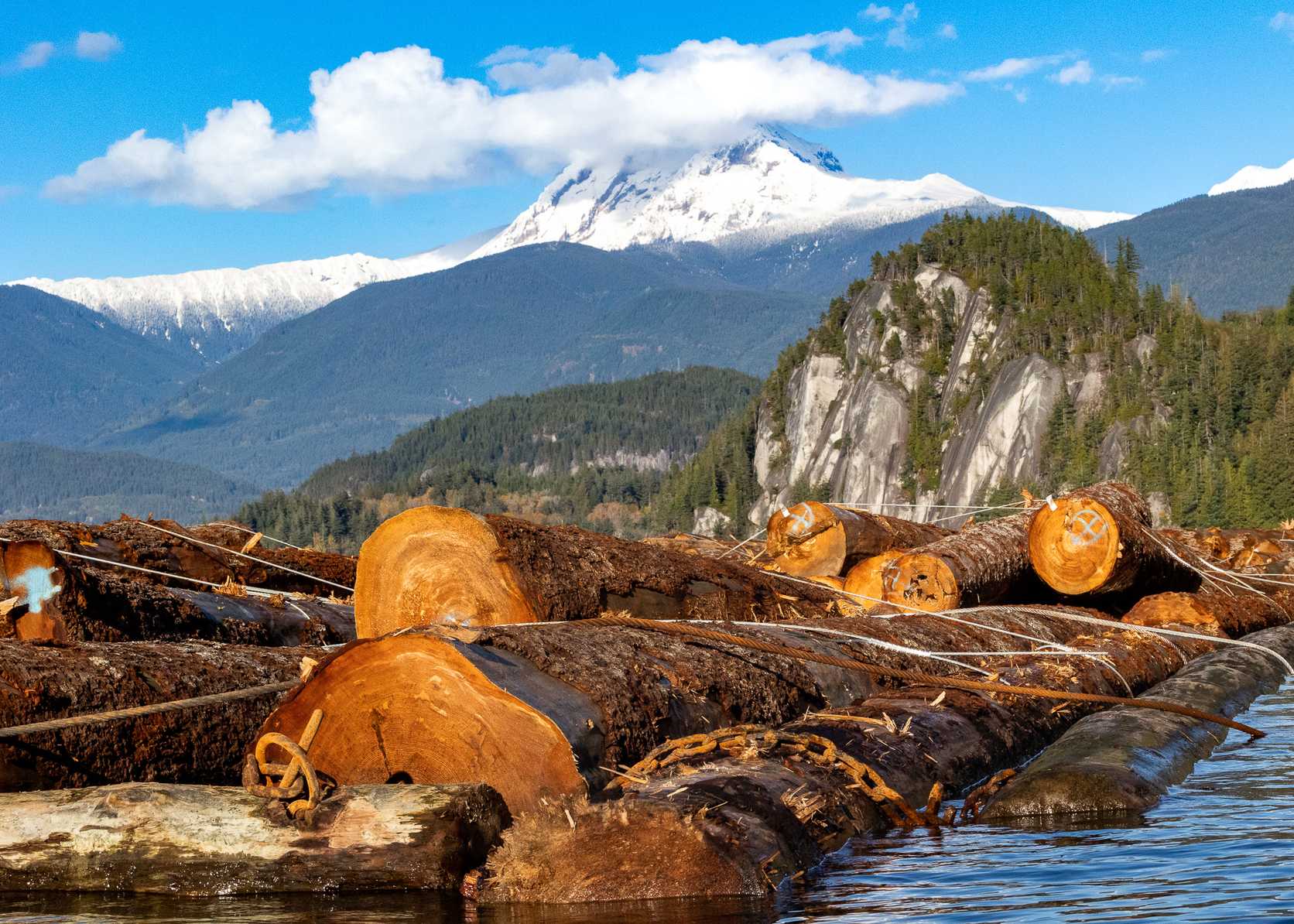
In recent years, many industries have shifted to more sustainable practices and reduced the impact of human activity on the environment. There have also been significant efforts by the Squamish Nation, other levels of government and NGOs invested in various initiatives to restore, protect and preserve the natural resources of the Sound, including reforestation, habitat restoration, and the creation of marine and terrestrial protected areas.
The success of these efforts can be recognized by the increased presence of marine mammals, salmon, herring and other fish species, healthy intertidal zones and lush forested shorelines, including the increased frequency of Transient and Southern Resident Orca whales, and Humpacks frequenting the Sound.
What is the Ecology of Howe Sound?
Átl’ka7tsem Howe Sound hosts an abundant and diverse ecology, with a complex mix of marine, freshwater and terrestrial habitats, including mountains, forests, wetlands, and estuaries.
The marine ecosystem is characterized by nutrient-rich waters that support a wide range of marine life, including fish, invertebrates, and marine mammals. Some of the Sound's signature animals include orcas, eagles, humpbacks, dolphins, porpoises, sea lions, and seals.
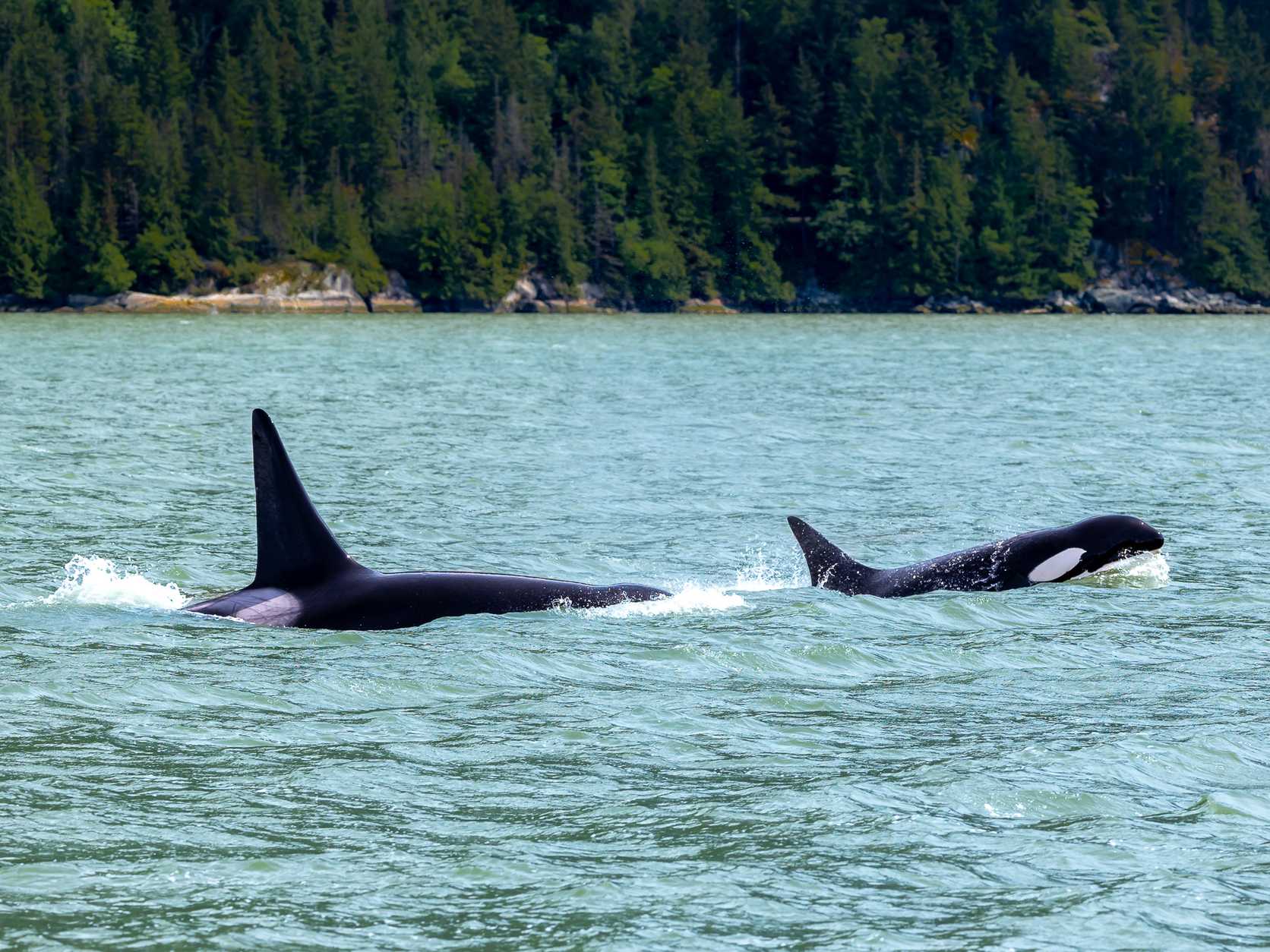
In the late 1990s, some of the largest known glass sponge reefs in the world were discovered in the Sound. Glass sponge reefs are an ancient, endangered and fragile ecosystem made up of deep-water organisms that have a skeleton made of silica (glass), and are considered to be the oldest living organism on earth. These reefs create important habitat and nursery grounds for marine life, including fish, crabs, and octopus.
The estuaries and wetlands of Howe Sound provide offers critical habitat for migratory birds and other wildlife. The estuaries play key roles in the life cycles of fish, such as salmon, which live in the ocean and spawn in the freshwater streams that flow into the Sound.
The terrestrial ecosystem of the areas surrounding Howe Sound is characterized by a mix of lush coniferous and deciduous forests, alpine meadows, and wetlands. This ecosystem is home to a wide range of wildlife, including black and grizley bears, deer, wolves, mink, otters, and a variety of bird species, such as bald and golden eagles, oystercatchers, herons, murrelets and goshawks.
Átl&ka7tsem/Howe Sound
UNESCO Biosphere Reserve
Canadian Coastal Sailing promotes education, awareness and sustainable tourism practices so that we may respect and protect the rich ecological system in which we are privileged to share with nature, residents and guests.
In 2021, after a decade of hard work invested by a group of passionate volunteers, and a recognition of its unique ecological and cultural resources, UNESCO designated Howe Sound as a biosphere reserve. These reserves are intended to improve the relationship between people and the environment and promote sustainable development by balancing the conservation of natural resources with economic and social development.
Join Us
Átl’ka7tsem Howe Sound is a diverse area known for its stunning natural beauty, recreational opportunities, and rich marine life. We feel incredibly fortunate to call this place home, have the priviledge to sail in Squamish, and welcome people from all areas of the world to share in its magic and enjoy our hospitality.
Understanding this place is also about understanding the collective responsibilty we have to preserve the natural legacy and environment of Howe Sound. We kindly ask that while here, please respect the impact that we, as humans, can have on the environment in which we explore, and share the responsibility to preserve the magic for others, including the generations people, plants and animals that depend upon our actions to benefit from the future health of Átl’ka7tsem Howe Sound.
